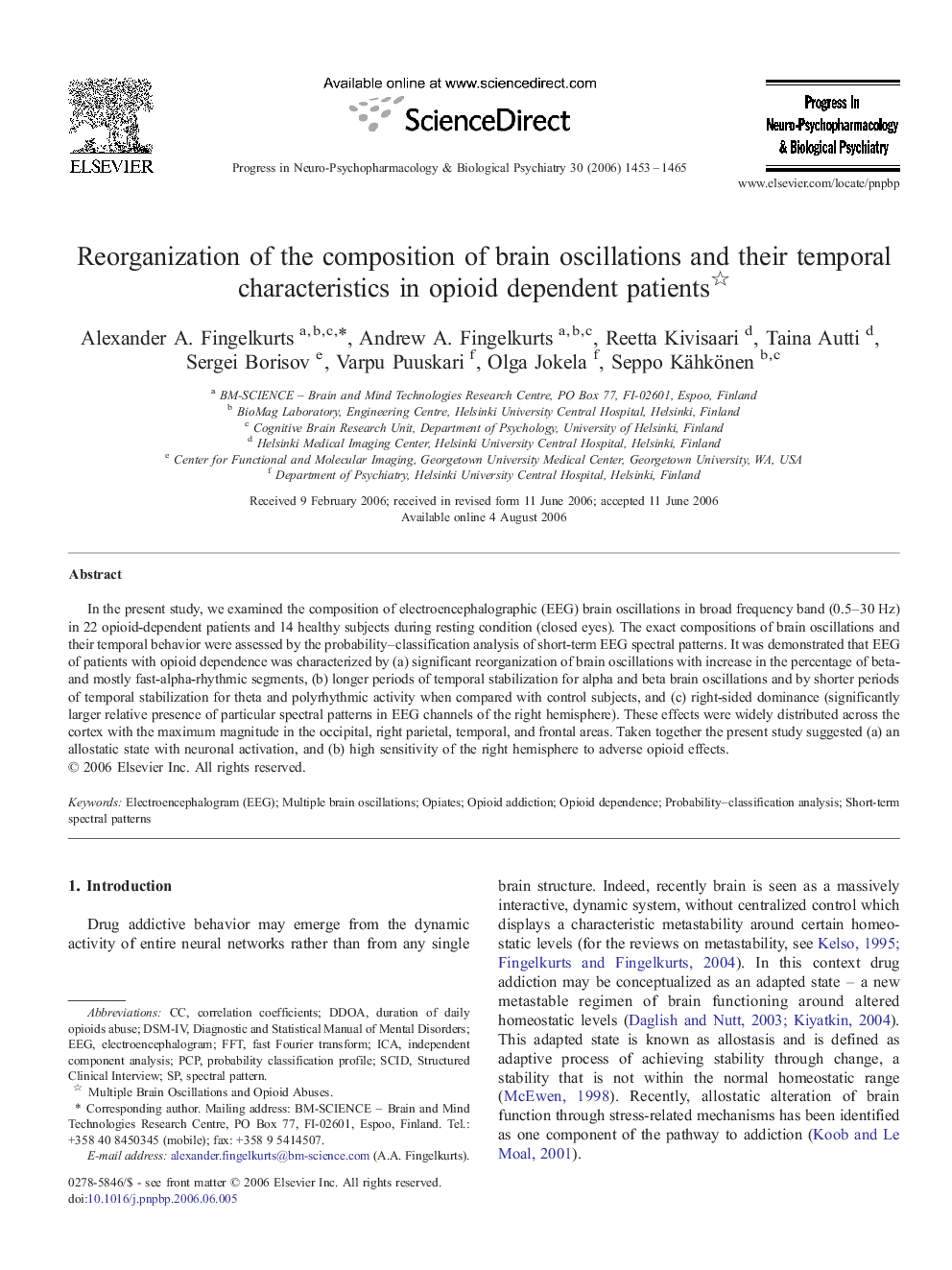| Article ID | Journal | Published Year | Pages | File Type |
|---|---|---|---|---|
| 2566693 | Progress in Neuro-Psychopharmacology and Biological Psychiatry | 2006 | 13 Pages |
In the present study, we examined the composition of electroencephalographic (EEG) brain oscillations in broad frequency band (0.5–30 Hz) in 22 opioid-dependent patients and 14 healthy subjects during resting condition (closed eyes). The exact compositions of brain oscillations and their temporal behavior were assessed by the probability–classification analysis of short-term EEG spectral patterns. It was demonstrated that EEG of patients with opioid dependence was characterized by (a) significant reorganization of brain oscillations with increase in the percentage of beta- and mostly fast-alpha-rhythmic segments, (b) longer periods of temporal stabilization for alpha and beta brain oscillations and by shorter periods of temporal stabilization for theta and polyrhythmic activity when compared with control subjects, and (c) right-sided dominance (significantly larger relative presence of particular spectral patterns in EEG channels of the right hemisphere). These effects were widely distributed across the cortex with the maximum magnitude in the occipital, right parietal, temporal, and frontal areas. Taken together the present study suggested (a) an allostatic state with neuronal activation, and (b) high sensitivity of the right hemisphere to adverse opioid effects.
